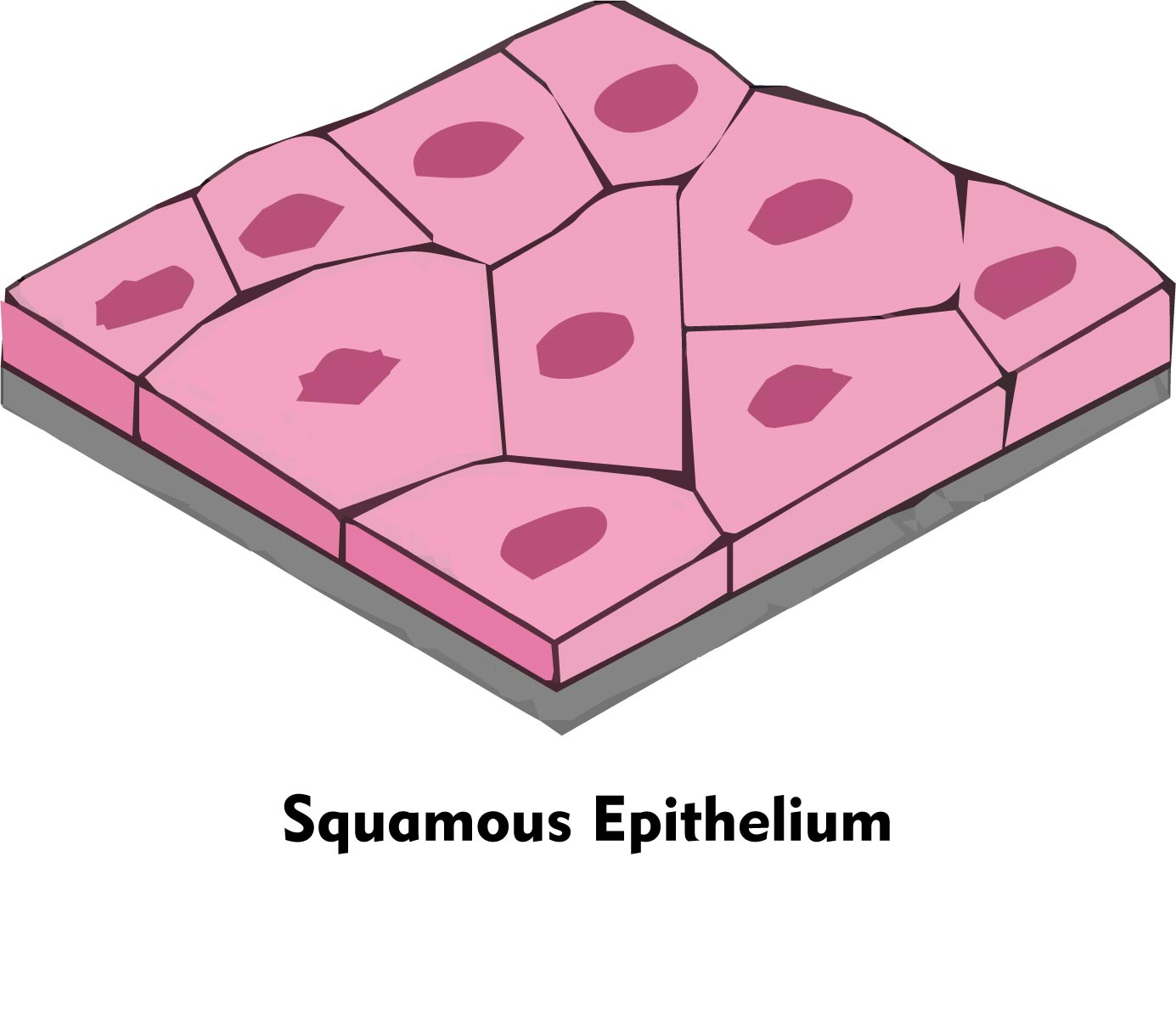Answer
395.1k+ views
Hint: These types of epithelium are flat cells that are very thin, and occur as the covering epithelium of the alveoli of the lungs, the glomeruli, and the capsule of the kidney.
Complete answer:
The epithelium is a layer of cells closely bound to each other resulting in the formation of a continuous sheet. In animals’ modification of these cells with outgrowth and ingrowth is commonly seen.
The lining of the blood vessel is made up of squamous epithelium.
Additional Information:
Characteristics of epithelial cells-
-the outline of the cell is marked.
-the nucleus is large and spherical or ellipsoidal.
-the cytoplasm of the cell is usually large in the amount and the presence of many granules is also seen.
According to the surrounding the epithelium can be protective (may produce outgrowth like nails, horns on animals), absorptive, or secretory (sebaceous gland and mammary glands).
The cells of the epithelial can be of various types like columnar, simple, squamous, irregular, or ciliated.
The columnar epithelium covers the intestinal tract from the end of the esophagus to the rectum.
The cubical epithelium is found in many glands and ducts like in the kidney.
Ciliated epithelium lines the trachea, bronchi of the lungs, nasal cavities, uterus, and oviducts of female and in male epididymis and vasa deferens.

So, the correct answer is,’ Squamous epithelium.’
Note: When the cells of an epithelial surface are several layers deep, they can be distinguished into: stratified (mouth, esophagus, rectum), stratified ciliated (a respiratory passage, the vas deferens, and the epididymis), and transitional epithelium (urinary bladder).
Complete answer:
The epithelium is a layer of cells closely bound to each other resulting in the formation of a continuous sheet. In animals’ modification of these cells with outgrowth and ingrowth is commonly seen.
The lining of the blood vessel is made up of squamous epithelium.
Additional Information:
Characteristics of epithelial cells-
-the outline of the cell is marked.
-the nucleus is large and spherical or ellipsoidal.
-the cytoplasm of the cell is usually large in the amount and the presence of many granules is also seen.
According to the surrounding the epithelium can be protective (may produce outgrowth like nails, horns on animals), absorptive, or secretory (sebaceous gland and mammary glands).
The cells of the epithelial can be of various types like columnar, simple, squamous, irregular, or ciliated.
The columnar epithelium covers the intestinal tract from the end of the esophagus to the rectum.
The cubical epithelium is found in many glands and ducts like in the kidney.
Ciliated epithelium lines the trachea, bronchi of the lungs, nasal cavities, uterus, and oviducts of female and in male epididymis and vasa deferens.

So, the correct answer is,’ Squamous epithelium.’
Note: When the cells of an epithelial surface are several layers deep, they can be distinguished into: stratified (mouth, esophagus, rectum), stratified ciliated (a respiratory passage, the vas deferens, and the epididymis), and transitional epithelium (urinary bladder).
Recently Updated Pages
How do you arrange NH4 + BF3 H2O C2H2 in increasing class 11 chemistry CBSE

Is H mCT and q mCT the same thing If so which is more class 11 chemistry CBSE

What are the possible quantum number for the last outermost class 11 chemistry CBSE

Is C2 paramagnetic or diamagnetic class 11 chemistry CBSE

What happens when entropy reaches maximum class 11 chemistry JEE_Main

Calculate the volume occupied by 88 gram of CO2 at class 11 chemistry CBSE

Trending doubts
Difference between Prokaryotic cell and Eukaryotic class 11 biology CBSE

Fill the blanks with the suitable prepositions 1 The class 9 english CBSE

Write an application to the principal requesting five class 10 english CBSE

Difference Between Plant Cell and Animal Cell

a Tabulate the differences in the characteristics of class 12 chemistry CBSE

Change the following sentences into negative and interrogative class 10 english CBSE

What organs are located on the left side of your body class 11 biology CBSE

Discuss what these phrases mean to you A a yellow wood class 9 english CBSE

List some examples of Rabi and Kharif crops class 8 biology CBSE



